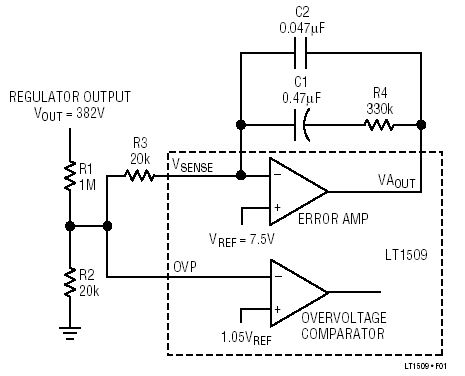eem2am
Banned
calculating opamps gains
hello
in LT1509 (pfc controller) datasheet, page 7 , figure 1 , there is an opamp with feedback.
https://www.linear.com/pc/downloadDocument.do?navId=H0,C1,C1003,C1142,C1138,P1516,D1119
the gain is -Z(feedback)/Z1
...where Z1 is supposed to be R1+R3 ?
or are R1 and R2 considered to be in parallel? ...since to AC they are effectively in parallel ?....and then Z1 should be equal to R3 + R1//R2 ?
many thanks for reading
hello
in LT1509 (pfc controller) datasheet, page 7 , figure 1 , there is an opamp with feedback.
https://www.linear.com/pc/downloadDocument.do?navId=H0,C1,C1003,C1142,C1138,P1516,D1119
the gain is -Z(feedback)/Z1
...where Z1 is supposed to be R1+R3 ?
or are R1 and R2 considered to be in parallel? ...since to AC they are effectively in parallel ?....and then Z1 should be equal to R3 + R1//R2 ?
many thanks for reading
